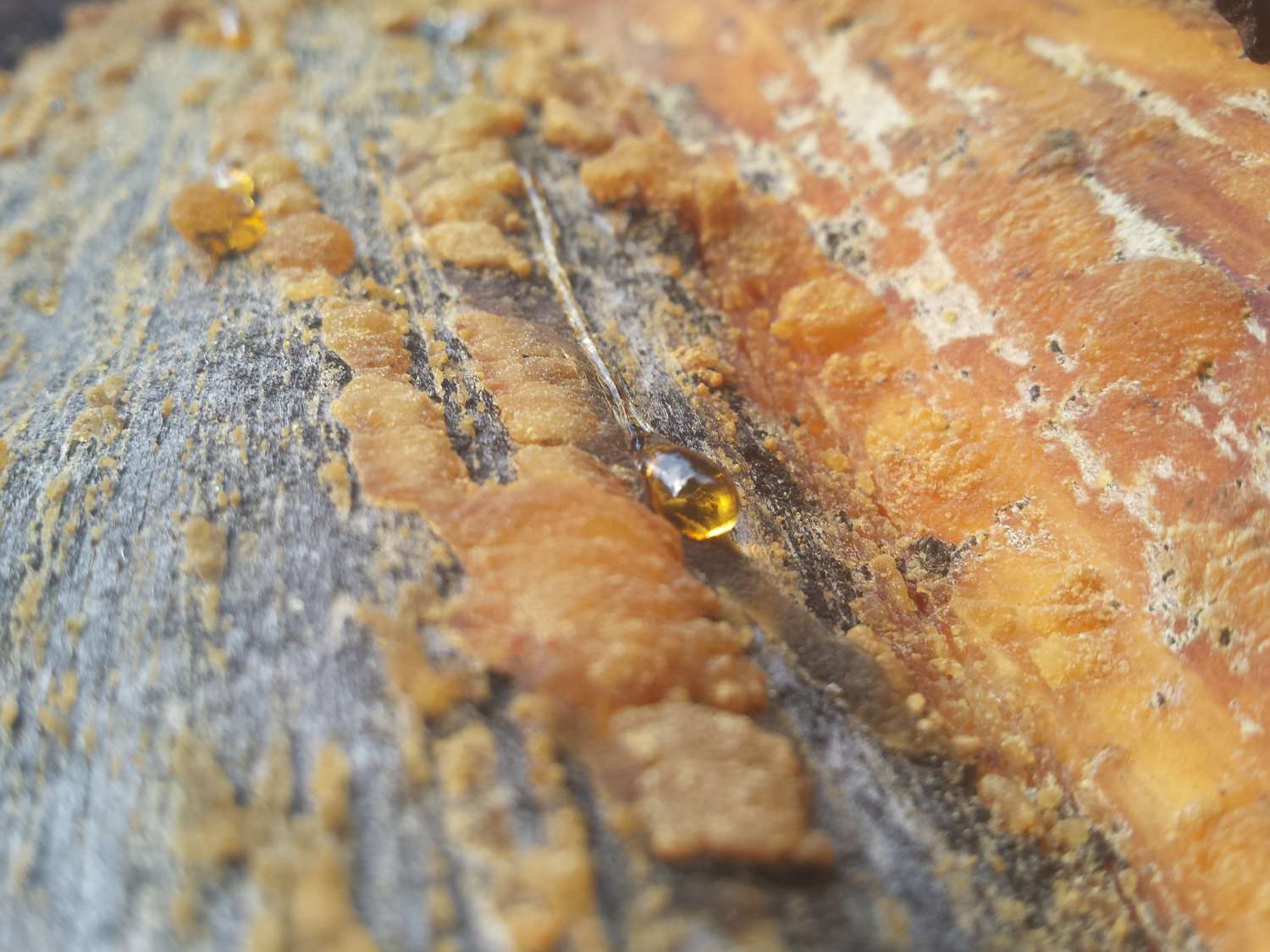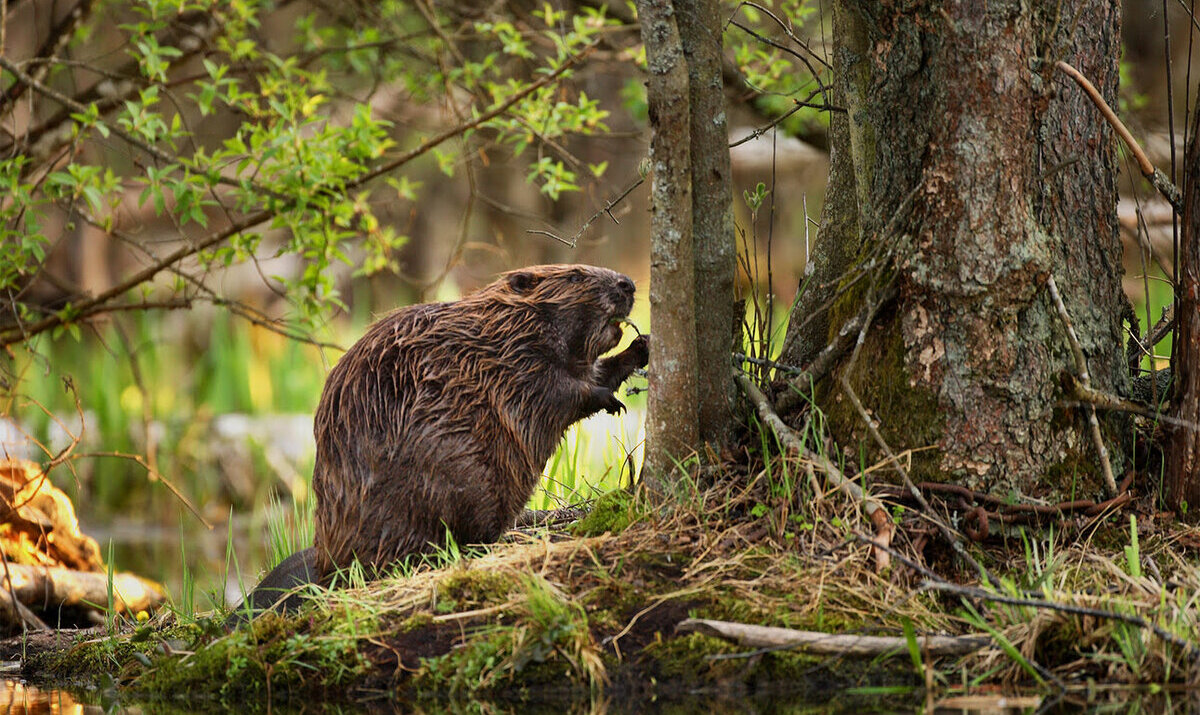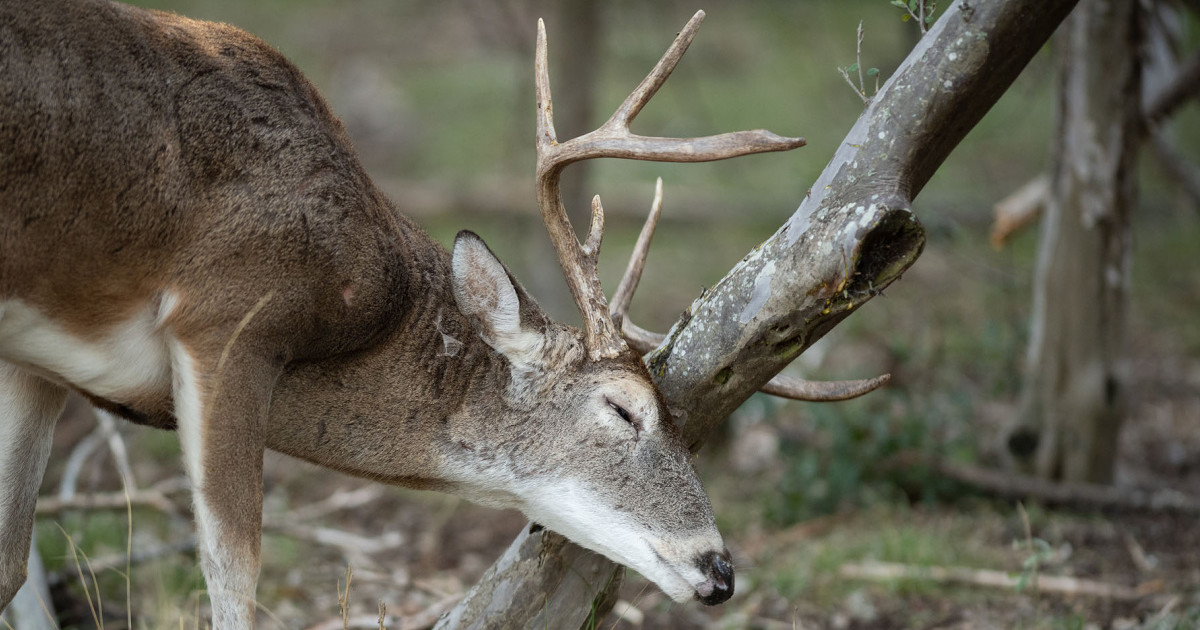Home>Gardening Techniques>Seasonal Gardening>Why Do Trees Leaves Change Colors


Seasonal Gardening
Why Do Trees Leaves Change Colors
Published: November 4, 2023
Learn about the fascinating phenomenon of why trees change color in different seasons and explore seasonal gardening tips to enhance your gardening experience.
(Many of the links in this article redirect to a specific reviewed product. Your purchase of these products through affiliate links helps to generate commission for Chicagolandgardening.com, at no extra cost. Learn more)
Table of Contents
- Introduction
- The Role of Pigments in Changing Leaf Color
- The Influence of Environmental Factors on Leaf Color
- Seasonal Transitions: Why Leaves Change Color in Autumn
- The Importance of Water and Nutrient Availability in Leaf Color Change
- The Significance of Temperature and Light in Leaf Color Change
- How Different Tree Species Display Autumn Colors
- Human Impact on Leaf Color Change
- Conclusion
Introduction
The changing colors of leaves in the fall season is a mesmerizing sight that captivates our senses and signals the arrival of autumn. As the days grow shorter and the temperatures begin to cool, trees undergo a remarkable transformation, shedding their vibrant green hues and revealing a breathtaking palette of reds, oranges, yellows, and browns. This natural phenomenon has fascinated humans for centuries and draws crowds of enthusiasts eager to witness the magical display of colors in parks, forests, and gardens.
But have you ever wondered why leaves change their colors? Is it just a random occurrence or is there a scientific explanation behind this annual spectacle? In this article, we will explore the fascinating world of seasonal leaf color change and discover the intricate processes that influence this phenomenon.
Understanding the science behind the changing colors of leaves requires delving into the role of pigments, environmental factors, and tree physiology. By exploring these aspects, we can gain a deeper appreciation for this natural phenomenon and learn how to use this knowledge to enhance our gardening and landscaping endeavors.
So, if you’re ready to embark on a journey into the captivating world of autumn foliage, let’s dive in and unravel the mysteries behind why leaves change their colors!
The Role of Pigments in Changing Leaf Color
At the heart of the mesmerizing color change in autumn leaves are a variety of pigments that lie hidden within the green chlorophyll. These pigments, namely carotenoids and anthocyanins, play a crucial role in creating the vibrant hues that we associate with the fall season.
Chlorophyll is the dominant pigment in leaves during the growing season, responsible for capturing sunlight and converting it into energy through the process of photosynthesis. Its green color masks the presence of other pigments within the leaf. However, as autumn approaches and the days become shorter, the production of chlorophyll slows down, revealing the underlying pigments.
Carotenoids, such as beta-carotene and lutein, are the pigments responsible for the warm hues of yellow, orange, and brown that we see in many autumn leaves. These pigments have been present in the leaf throughout the growing season, but they are overwhelmed by the abundance of chlorophyll during the summer months. As chlorophyll production diminishes, the carotenoids become more prominent, creating stunning displays of autumn foliage.
Anthocyanins, on the other hand, are responsible for the vibrant reds, purples, and blues that grace certain tree species during the fall. Unlike carotenoids, anthocyanins are not present in leaves throughout the year. Instead, they are synthesized in autumn as a response to environmental factors such as light intensity and temperature. These pigments are produced in the leaf cells and give rise to the striking hues that we associate with the autumn season.
The intensity and combination of pigments present in a leaf contribute to the unique coloration observed in different tree species. For instance, maples and dogwoods often display brilliant reds and purples due to a high concentration of anthocyanins, while certain oaks and beeches exhibit shades of golden brown due to an abundance of carotenoids.
Understanding the role of pigments in changing leaf color is not only fascinating but also valuable for gardeners and landscapers. By selecting tree species with specific pigmentation characteristics, one can create stunning autumn displays that bring joy and beauty to outdoor spaces. Additionally, this knowledge can be applied to enhance seasonal gardening practices, allowing for the creation of dynamic landscapes that evolve with the changing seasons.
The Influence of Environmental Factors on Leaf Color
The changing colors of leaves in autumn are not solely dictated by the presence of pigments within the leaf. Environmental factors also play a crucial role in influencing the timing and intensity of the color change. As the season transitions from summer to fall, several key environmental factors come into play, shaping the beautiful hues that grace our landscapes.
One of the primary drivers of leaf color change is the reduction in daylight hours. As the days become shorter, trees receive less sunlight, which triggers a series of physiological changes within the leaf. This reduction in light intensity causes a decrease in chlorophyll production, leading to the breakdown of chlorophyll molecules and the revelation of other pigments.
Temperature is another significant factor that influences the colors displayed by autumn leaves. Cool, crisp nights coupled with mild daytime temperatures create optimal conditions for the formation of vibrant reds and purples. The production of anthocyanins, the pigments responsible for these hues, is enhanced by the interplay of light and temperature. During autumn, the bright sunny days and cool, chilly nights work harmoniously to create a stunning kaleidoscope of colors.
Moisture availability also plays a role in leaf color change. Sufficient water supply during the growing season contributes to a healthy tree with vibrant foliage. In contrast, periods of drought or moisture stress can lead to premature leaf drop, resulting in a shorter and less vivid display of autumn colors. Adequate watering and providing optimal moisture conditions for trees can help ensure a more prolonged and vibrant autumn foliage.
Furthermore, the soil fertility and nutrient availability can impact the quality of leaf color change. Nutrient deficiencies or imbalances can lead to pale or lackluster foliage in the autumn season. Providing trees with proper nutrition and maintaining healthy soil conditions can enhance the color vibrancy and overall beauty of the autumn foliage.
Overall, the influence of environmental factors on leaf color change is a delicate balance between light intensity, temperature, moisture availability, and nutrient status. These factors interact with the tree’s physiology, pigmentation, and overall health to create the breathtaking array of colors we witness in autumn. Understanding and appreciating these environmental influences allows us to create the optimal conditions for vibrant autumn displays in our gardens and landscapes.
Seasonal Transitions: Why Leaves Change Color in Autumn
Autumn is a season of transition, marked by the enchanting transformation of leaves from green to a rich tapestry of colors. But what exactly triggers this captivating phenomenon? The answer lies in the natural cycle of tree growth and the changing environmental conditions that accompany the arrival of fall.
During the growing season, leaves play a vital role in photosynthesis, harnessing the power of sunlight to convert carbon dioxide and water into energy-rich sugars. This process is fueled by chlorophyll, the dominant pigment responsible for the vibrant green color of leaves. However, as the days become shorter and temperatures drop, trees prepare for the winter season by entering a dormant phase.
In preparation for dormancy, trees begin to actively reabsorb nutrients from their leaves. This process, known as senescence, is initiated by the release of a hormone called auxin. As auxin levels rise, the production of chlorophyll declines, eventually leading to its breakdown. As chlorophyll dissipates, other pigments that were previously masked by its vibrant green color begin to emerge.
Carotenoids, such as beta-carotene and lutein, contribute to the warm hues of yellow, orange, and brown that we associate with the changing leaves. These pigments are present in leaves throughout the growing season but are overshadowed by the abundance of chlorophyll. As the chlorophyll breaks down, the carotenoids become more visible, creating a stunning display of autumnal colors.
In certain tree species, such as maples and dogwoods, another pigment group called anthocyanins also come into play during the fall season. These pigments are responsible for the vibrant reds, purples, and blues that grace the leaves of these trees. Produced in response to factors like light intensity and temperature, anthocyanins create a striking contrast against the backdrop of yellow and orange carotenoids.
While the exact mechanisms that trigger the production of carotenoids and anthocyanins are still being studied, it is believed that environmental cues, such as decreasing daylight hours and cooler temperatures, play a significant role. As the days become shorter and temperatures drop, trees receive less sunlight and initiate a series of physiological changes that result in the breathtaking colors of autumn.
By understanding the seasonal transitions that occur during autumn, we can better appreciate the intricate beauty of changing leaves. Whether it’s strolling through a picturesque park or tending to our gardens, witnessing the vibrant display of fall foliage reminds us of the awe-inspiring cycles of nature and the wonder of the changing seasons.
The Importance of Water and Nutrient Availability in Leaf Color Change
While the role of pigments and environmental factors in leaf color change is well-known, the availability of water and nutrients also plays a crucial role in determining the vibrancy and timing of autumn foliage. Adequate water and nutrient supply are essential for maintaining tree health and ensuring a breathtaking display of colors during the fall season.
Water availability directly impacts the physiology of a tree, influencing its ability to carry out essential functions. During the growing season, water is crucial for the transport of nutrients from the soil to the leaves. It plays a central role in the photosynthetic process, enabling the conversion of sunlight into energy-rich sugars. Without sufficient water, a tree may experience stress and struggle to maintain optimal leaf function.
Water stress can have a direct impact on leaf color change in the fall. Trees that are subjected to prolonged periods of drought or limited access to water may exhibit an early and rapid onset of leaf senescence, resulting in premature leaf drop. This premature leaf loss can significantly impact the duration and vibrancy of the autumn foliage display.
In addition to water, nutrient availability also influences leaf color change. Essential nutrients, such as nitrogen, phosphorus, and potassium, are integral for the proper functioning and development of leaves. These nutrients are essential components of chlorophyll and other pigments, playing a critical role in the synthesis and breakdown of pigments during the changing seasons.
Nitrogen, in particular, is closely linked to leaf color change. Adequate nitrogen availability during the growing season contributes to the production of healthy and vibrant leaves. However, as trees prepare for dormancy, they mobilize nitrogen from their leaves to store it for future use. This process can result in nitrogen deficiency and a subsequent decline in chlorophyll levels, leading to the vibrant display of carotenoids and anthocyanins.
Proper soil fertility and nutrient management are essential for maintaining the health and coloration of leaves. Regular soil testing can help identify nutrient deficiencies or imbalances and allow for targeted fertilization to ensure optimal leaf development and color change. Additionally, mulching and maintaining adequate moisture levels in the soil can help retain water and minimize water stress on trees, supporting healthy leaf function.
By recognizing the importance of water and nutrient availability in leaf color change, we can implement appropriate practices to ensure the vibrancy and longevity of the autumn foliage. Providing trees with adequate water, maintaining soil fertility, and meeting their nutrient requirements throughout the year will contribute to a spectacular display of colors during the fall season.
The Significance of Temperature and Light in Leaf Color Change
Temperature and light are two key environmental factors that exert a significant influence on the timing and intensity of leaf color change during the autumn season. The interplay between these factors is instrumental in orchestrating the breathtaking spectrum of hues exhibited by trees as summer transitions into fall.
Cooling temperatures play a vital role in stimulating leaf color change. As the days grow shorter and nights become cooler, trees are triggered to enter a dormant phase. This process initiates a cascade of physiological changes within the leaf, including the breakdown of chlorophyll. The decline in chlorophyll levels reveals the presence of other pigments, such as carotenoids and anthocyanins, which contribute to the vivid palette of colors seen in autumn foliage.
While temperature acts as a catalyst, light availability and quality also have a profound impact on leaf color change. As daylight hours diminish during the fall, trees receive less sunlight. This reduction in light intensity leads to a decrease in chlorophyll production and the subsequent breakdown of the pigment. As chlorophyll levels diminish, other pigments, particularly the carotenoids and anthocyanins, become more visible and contribute to the vibrant autumn hues.
Light quality, specifically changes in the ratio of red to far-red light, is another important factor in leaf color change. Certain tree species, such as maples and dogwoods, are particularly responsive to changes in light quality. The shift in light conditions triggers physiological responses within the leaf cells, leading to the production of anthocyanins. The resulting red and purple pigmentation provides a striking contrast against the backdrop of yellow carotenoids, enhancing the overall brilliance of the autumn foliage.
The intricate dance between temperature and light during the autumn season creates an optimal environment for the formation of vibrant leaf colors. Cool, crisp nights coupled with mild daytime temperatures promote the synthesis of pigments, while the reduction in daylight hours and shifts in light quality regulate their visibility.
Understanding the significance of temperature and light in leaf color change not only enriches our appreciation of nature’s beauty but also guides our seasonal gardening practices. By selecting tree species that thrive in specific temperature ranges and consider their light requirements, gardeners can create stunning autumn displays that complement their outdoor spaces. Additionally, manipulating light and temperature conditions through techniques like shading or artificial lighting can potentially extend the duration of vibrant foliage.
The interplay between temperature and light is a delicate and dynamic process that orchestrates the enchanting transformation of leaves in autumn. By observing and appreciating this dance, we can marvel at the mesmerizing colors that grace our landscapes and make the most of the opportunities to enhance our seasonal gardening endeavors.
How Different Tree Species Display Autumn Colors
When it comes to the stunning display of autumn colors, different tree species exhibit their unique palette of hues, adding diversity and beauty to the fall landscape. From vibrant reds to golden yellows, understanding how different trees display their autumn colors can help us appreciate and plan for a captivating seasonal spectacle.
Maple trees are renowned for their brilliant autumn foliage. They showcase a wide range of colors, including vibrant oranges, fiery reds, and rich burgundies. This stunning display is mainly attributed to high concentrations of anthocyanin pigments, which are produced in response to cool temperatures and light intensity. Sugar maples, in particular, are known for their vibrant red leaves, while red maples often exhibit red, orange, and yellow hues.
Dogwood trees also put on a show-stopping display in the fall season. Their foliage transforms into shades of deep red, purples, and rich burgundies. The vibrant colors of dogwoods are a result of both anthocyanins and carotenoids that are present in their leaves. This combination of pigments creates a captivating tapestry of autumn hues.
Oaks, on the other hand, tend to showcase a more subdued autumn color palette. While some species, like the red oak, exhibit vibrant reds, many oak species lean towards hues of russet brown and bronze. The colors are attributed to the high concentration of tannins in their leaves, which create earthy and warm tones.
Birch trees offer a unique autumn display with their golden yellow foliage. The leaves of birch trees contain a high concentration of carotenoids, particularly xanthophylls, which contribute to their striking yellow colors. The contrast of their elegant white bark against the backdrop of golden leaves creates a visually captivating sight.
Aspen trees make their mark in the fall landscape with their vibrant yellows and vibrant golds. Their leaves are rich in carotenoids, which give them their characteristic warm hues. The trembling leaves of aspen trees, shimmering in the gentle autumn breeze, create an enchanting scene.
It is important to note that while certain tree species are known for specific autumn colors, the hues can vary based on individual trees, growing conditions, and environmental factors. Additionally, factors like soil fertility, nutrient availability, and overall tree health can influence the intensity and duration of autumn colors.
By considering the unique display of autumn colors exhibited by different tree species, gardeners and landscapers can strategically plan and create captivating autumn landscapes. The interplay of various species with their distinctive hues can result in stunning compositions that celebrate the beauty of nature’s seasonal transitions.
Human Impact on Leaf Color Change
The changing colors of autumn leaves are a natural phenomenon that captivates our senses and connects us to the beauty of the seasons. However, human activities can have both direct and indirect impacts on the leaf color change process and the overall vibrancy of fall foliage.
One of the direct ways that humans can influence leaf color change is through the use of chemicals, such as herbicides and pesticides. These substances can alter the physiological processes within trees, potentially affecting the timing and intensity of leaf color change. Excessive chemical use or improper application can disrupt the natural cycle, leading to premature leaf drop or the distortion of leaf colors.
Indirectly, human activities can affect leaf color change through deforestation and habitat destruction. When trees are cleared to make way for development or agriculture, the natural landscape is altered, disrupting the ecosystem and potentially impacting the diversity and health of tree species in an area. This loss of tree diversity can result in a less diverse and dynamic display of autumn colors.
Climate change is another significant factor that can impact leaf color change. Rising temperatures and shifts in weather patterns can affect the timing and duration of autumn foliage. Extreme weather events, such as early frosts or prolonged droughts, can cause leaves to change color prematurely or lead to leaf drop before the colors fully develop.
Additionally, light pollution can interfere with the natural cues that trigger leaf color change. Artificial lights in urban environments can disrupt the photoperiod, or the duration of light and darkness, that trees rely on to initiate the transition to autumn colors. This can result in delayed or altered leaf color change patterns in affected trees.
While human activities can have negative impacts on leaf color change, we also have the opportunity to positively contribute to the vibrancy and health of fall foliage. Planting and preserving a diverse range of tree species in our landscapes can help ensure a rich and captivating display of autumn colors. Conserving natural habitats, reducing chemical use, and mitigating the effects of climate change are crucial steps we can take to protect the cycles and beauty of nature’s seasonal transitions.
By understanding and minimizing our impact on leaf color change, we can continue to enjoy and appreciate the breathtaking display of autumn foliage for generations to come.
Conclusion
The changing colors of leaves in autumn are a magical display of nature’s beauty. From the vibrant reds and oranges to the golden yellows and browns, the phenomenon of leaf color change captivates our senses and reminds us of the ever-changing cycles of life.
Through an exploration of the role of pigments, environmental factors, and tree physiology, we have gained a deeper understanding of why leaves change color in the fall. The interplay of carotenoids and anthocyanins, influenced by factors such as temperature, light, water availability, and nutrient status, creates the stunning array of hues that grace our landscapes.
Each tree species exhibits its unique palette of autumn colors, from the fiery reds of maples and dogwoods to the golden yellows of birch and aspen trees. Understanding these color variations allows us to curate captivating autumn landscapes and appreciate the diverse beauty of nature’s transitions.
However, it is crucial to recognize the impact that human activities can have on leaf color change. Excessive use of chemicals, deforestation, habitat destruction, climate change, and light pollution can disrupt the natural processes and diminish the vibrancy of fall foliage.
By actively working to reduce our negative impact and preserve the health of our trees and ecosystems, we can contribute to the continued brilliance of autumn colors. The careful selection of tree species, responsible chemical use, conservation efforts, and addressing climate change are essential steps in protecting and enhancing the awe-inspiring displays of autumn foliage.
As gardening enthusiasts and nature lovers, we have the opportunity to embrace and celebrate the beauty of seasonal transitions. Let us revel in the ever-changing colors of leaves in autumn, inspire others to appreciate the wonders of nature, and work together to ensure the preservation of this natural phenomenon for generations to come.








